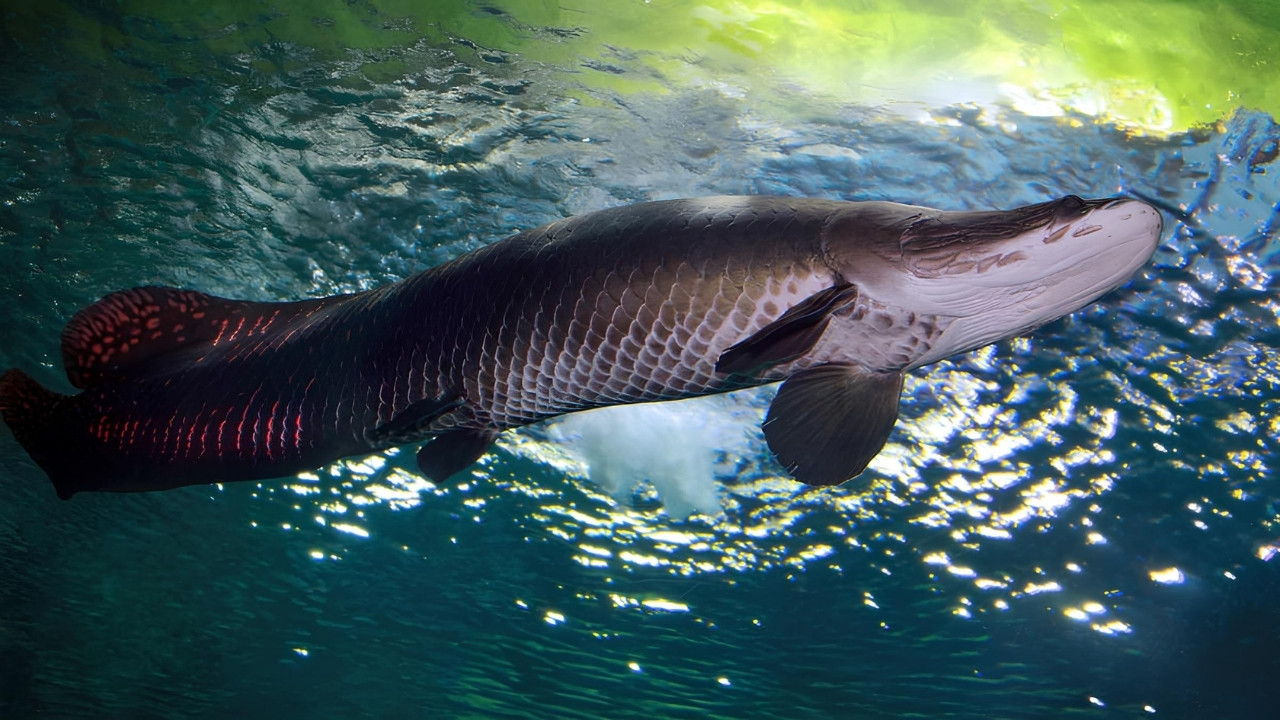
Ever heard of the Arapaima? This giant fish, native to the Amazon Basin, is one of the largest freshwater fish in the world. Arapaima can grow up to 15 feet long and weigh over 400 pounds! These fascinating creatures have a unique ability to breathe air, thanks to a specialized swim bladder. This adaptation allows them to survive in oxygen-poor waters. Arapaima are also known for their armored scales, which can fend off piranha bites. Despite their size and strength, these fish are vulnerable due to overfishing and habitat loss. Dive into these 34 amazing facts about the Arapaima and discover why this ancient fish is truly a marvel of nature.
Key Takeaways:
- Arapaima, the giant freshwater fish of the Amazon, can grow up to 15 feet long and weigh as much as 485 pounds. Their unique ability to breathe air and their powerful tails make them fascinating creatures to learn about.
- Arapaima play a crucial role in the Amazon ecosystem and hold cultural and economic significance for the local communities. Conservation efforts and sustainable fishing practices are essential to protect this remarkable species and support the livelihoods of the people in the region.
What is an Arapaima?
The Arapaima is one of the largest freshwater fish in the world. Native to the Amazon Basin, this giant fish has fascinated scientists and fish enthusiasts alike. Let's dive into some intriguing facts about this incredible creature.
- Arapaima can grow up to 15 feet long, making them one of the largest freshwater fish species.
- They can weigh as much as 485 pounds, which is roughly the weight of a grand piano.
- Arapaima have a unique ability to breathe air, thanks to a modified swim bladder that functions like a lung.
- They surface every 15 to 20 minutes to gulp air, a necessity for their survival in oxygen-poor waters.
- Their scales are incredibly tough, acting as armor to protect against predators like piranhas.
- These fish have a torpedo-shaped body, streamlined for swift movement through water.
- Arapaima are known for their powerful tails, which they use to propel themselves with great force.
- They are carnivorous, feeding on fish, crustaceans, and even small land animals that fall into the water.
- Arapaima have a specialized feeding technique called "gulper feeding," where they create a vacuum to suck in prey.
- Their mouths are lined with sharp, bony teeth, perfect for gripping slippery prey.
Habitat and Distribution
Understanding where Arapaima live and how they adapt to their environment can provide insight into their survival strategies.
- Arapaima are native to the Amazon River Basin, including rivers, lakes, and flooded forests.
- They thrive in slow-moving, oxygen-poor waters, where their air-breathing ability gives them an advantage.
- During the dry season, they often get trapped in isolated pools, making them easier targets for fishermen.
- Arapaima are known to migrate during the rainy season, moving to flooded forests to spawn.
- They build nests in shallow waters, where females lay thousands of eggs.
- Both parents guard the nest, with males often taking a more active role in protecting the young.
- Arapaima are considered a keystone species, playing a crucial role in maintaining the ecological balance of their habitat.
- Overfishing and habitat destruction have led to a decline in their population, making conservation efforts essential.
Unique Biological Features
Arapaima possess several unique biological traits that set them apart from other fish species.
- Their skin contains a high concentration of collagen, making it both tough and flexible.
- Arapaima have a lateral line system that helps them detect vibrations and movements in the water.
- They possess a highly developed sense of smell, which they use to locate prey.
- Their eyes are adapted to low-light conditions, allowing them to hunt effectively at dawn and dusk.
- Arapaima have a long, slender tongue covered in bony teeth, which they use to crush prey.
- They can survive out of water for up to 24 hours, as long as their skin remains moist.
- Arapaima exhibit sexual dimorphism, with males typically being smaller and more colorful than females.
- Their scales are covered in a layer of mucus that provides additional protection against parasites and infections.
Cultural and Economic Importance
Arapaima hold significant cultural and economic value for the communities living in the Amazon Basin.
- Indigenous tribes have long relied on Arapaima as a vital food source.
- The fish is often featured in local folklore and mythology, symbolizing strength and resilience.
- Arapaima meat is highly prized for its taste and texture, often compared to chicken or beef.
- The fish's scales and bones are used in traditional crafts and jewelry.
- Arapaima fishing has become a popular activity for sport fishermen, attracting tourists to the region.
- Sustainable fishing practices are being promoted to ensure the species' survival and support local economies.
- Arapaima are also being farmed in aquaculture facilities, providing an alternative to wild-caught fish.
- Conservation programs are working to protect their habitats and educate communities about the importance of preserving this remarkable species.
The Final Splash
Arapaima, one of the largest freshwater fish, continues to amaze with its unique traits. From its ability to breathe air to its armored scales, this giant fish is a marvel of nature. Found in the Amazon Basin, it plays a crucial role in the ecosystem. Its diet includes fish, birds, and even small mammals, showcasing its versatility as a predator.
Despite its impressive size and strength, arapaima faces threats from overfishing and habitat loss. Conservation efforts are essential to ensure its survival. By understanding and protecting this incredible species, we contribute to the health of our planet's waterways.
So, next time you think about the wonders of the natural world, remember the arapaima. Its story is a reminder of the delicate balance in nature and the importance of preserving it for future generations.
Frequently Asked Questions
Was this page helpful?
Our commitment to delivering trustworthy and engaging content is at the heart of what we do. Each fact on our site is contributed by real users like you, bringing a wealth of diverse insights and information. To ensure the highest standards of accuracy and reliability, our dedicated editors meticulously review each submission. This process guarantees that the facts we share are not only fascinating but also credible. Trust in our commitment to quality and authenticity as you explore and learn with us.


